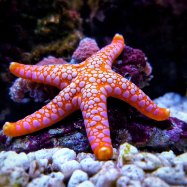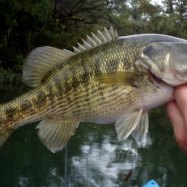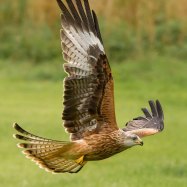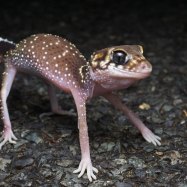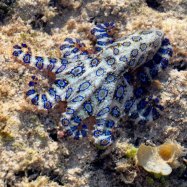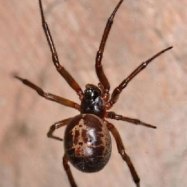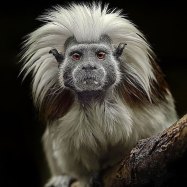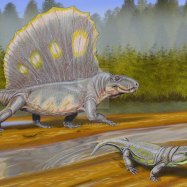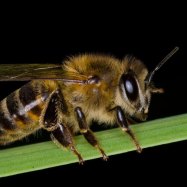
Koala
60-85 cm
The cuddly koala is a marsupial native to Eastern Australia. They belong to the Phascolarctidae family and have a small, round body shape. They are known for their iconic lazy lifestyle and love for eucalyptus leaves. Measuring 60-85 cm in length, these charming creatures are sure to steal your heart. #Koala #Australia #Marsupials
Animal Details Summary:
Common Name: Koala
Kingdom: Animalia
Habitat: Eucalyptus forests
The Adorable, Yet Misunderstood Koala: A Native of Eastern Australia
The world is full of fascinating creatures, from the majestic lion to the elusive giant panda. But there is one animal that often gets overlooked – the koala. This little bundle of fluff may seem like an unassuming creature, but it has captured the hearts of animal lovers around the globe. Not only is the koala adorable, but it also has a rich history and unique features that make it a fascinating subject to explore Koala. So, let's dive into the world of the koala and learn all about this iconic Australian animal.A Scientific Glimpse into the Koala
The koala (Phascolarctos cinereus), also known as the "koala bear," is a marsupial native to eastern Australia. Despite its common name, the koala is not a bear but belongs to the family Phascolarctidae, along with wombats. Its scientific name, Phascolarctos cinereus, comes from the Greek words "phaskolos" meaning pouch and "arctos" meaning bear, and the Latin word "cinereus" meaning ash-colored.The koala is classified under the kingdom Animalia, the phylum Chordata, the class Mammalia, and the order Diprotodontia. In scientific classification, animals are grouped based on their physical and behavioral characteristics, allowing us to better understand and study them. Koalas share their classifications with other familiar animals, such as dogs, cats, and bears.
An Almost Exclusive Relationship with Eucalyptus
Koalas are iconic for their love of eucalyptus, and almost exclusively feed on the leaves of this evergreen tree. This unique relationship between koalas and eucalyptus has been around for millions of years Keyhole Cichlid. It is believed that koalas evolved to specialize in eucalyptus as their primary food source due to the abundance of these trees in Australia's eucalyptus forests. Plus, eucalyptus leaves contain a lot of water, which is vital for koalas' survival, given the arid climate of their native land.Interestingly, koalas are considered to be more of folivores than herbivores. Folivores are animals that primarily feed on leaves, and koalas are one of the few animals that can tolerate the toxins present in eucalyptus leaves. These toxins, combined with the low nutritional value of eucalyptus leaves, make it harder for koalas to get the energy and nutrients they need. That is why koalas spend most of their time sleeping (up to 20 hours a day) to conserve energy.
A Home Among the Eucalyptus
Koalas are endemic to Australia, making their home in the eucalyptus forests of eastern Australia. They can be found in a variety of habitats, including woodlands, coastal areas, and sub-alpine regions. However, they have a strong preference for forests with a high density of eucalyptus trees. Koalas are territorial animals, with each male having its own home range and overlapping with several females' territories.Koalas are also known for their excellent climbing skills, thanks to their strong limbs and sharp claws. They spend most of their time up in the trees, dozing off or munching on eucalyptus leaves. Koalas are also known for being solitary animals, except during the breeding season or when they are caring for their young.
Home Country Advantage: Australia
Australia is known for its unique and diverse wildlife, and the koala is no exception. This iconic animal is found only in Australia, making it a proudly Australian species. The koala has even been declared a national emblem of Australia, and its image is featured on many Australian stamps, coins, and souvenirs. It is not hard to see why this lovable creature is a beloved symbol of Australia.Aside from being a cultural symbol, koalas also play a crucial role in maintaining the balance of the eucalyptus forests. Their diet of eucalyptus leaves helps keep the trees in check, preventing overgrowth and creating openings for new growth. These ecosystems are also home to many other species, so the presence of koalas is essential for maintaining the health and diversity of the Australian environment.
The Shades of a Koala
Koalas may have a limited color palette, but they are still incredibly striking. Their fur is predominantly a shade of gray, but it can have a slight brown or reddish tinge. The fur on their ears, nose, and paws is usually darker than the rest of their body. Koalas have a thick and soft coat that acts as insulation and protects them from harsh weather conditions.Their gray coloration also serves as camouflage, helping them blend seamlessly into the trees' branches and leaves. This helps to keep them hidden from predators, such as dingoes and foxes, which are known to prey on koalas in some areas. In addition, koalas have a white chin, chest, and belly, which provides a stark contrast to their gray fur.
A Small, Yet Adorable Package
When we think of Australia, we often visualize large and intimidating animals such as kangaroos and crocodiles. But the koala is the complete opposite. These adorable creatures are quite small, with a body length ranging from 60-85 cm and weighing up to 15 kilograms. They have a round and stout body, with short and stocky limbs, giving them a teddy bear-like appearance.Koalas also have a unique feature that sets them apart from most other mammals – they have two thumbs. These thumbs help them grip onto eucalyptus branches and efficiently strip off the leaves with their teeth. This adaptation is crucial for their survival, as their diet of eucalyptus leaves requires them to hold on tightly to the branches to support their weight.
A National Treasure in Need of Protection
Despite their iconic status, koalas are facing significant threats to their survival. The rapid loss and fragmentation of their habitat due to urbanization and agriculture have had a severe impact on koala populations. This has also led to an increase in koalas being injured or killed due to collisions with vehicles or attacks by domestic animals.In addition, climate change and wildfires have also taken a toll on koala populations. The koala's primary food source, eucalyptus, is highly affected by changes in temperature and extreme weather conditions. As a result, koalas are facing a decline in their food supply and are forced to find other sources of energy, which can put them in danger.
The Koala Conservation Effort
Thankfully, there are many organizations and initiatives dedicated to protecting and preserving koalas and their habitat. In Australia, koalas are listed as a vulnerable species, and several laws and regulations have been put in place to protect them. These include land management practices, such as creating wildlife corridors and planting eucalyptus trees, to help connect fragmented habitats and provide a sustainable food source for koalas.Additionally, koalas are also kept in zoos and wildlife parks, where they are bred in captivity to help increase their population numbers. These programs have been successful in rehabilitating injured and sick koalas and releasing them back into the wild. Through education and conservation efforts, we can all contribute to preserving these precious animals for generations to come.
In Conclusion
The koala may not be the most unusual or extravagant animal, but its unique features and charming appearance make it a beloved creature of the animal kingdom. From its specialized diet and distinctive climbing abilities to its vital role in the Australian ecosystem, koalas are truly one of a kind. As we continue to learn more about this fascinating animal, let us also remember the importance of protecting and preserving koalas and their habitat for future generations to enjoy.
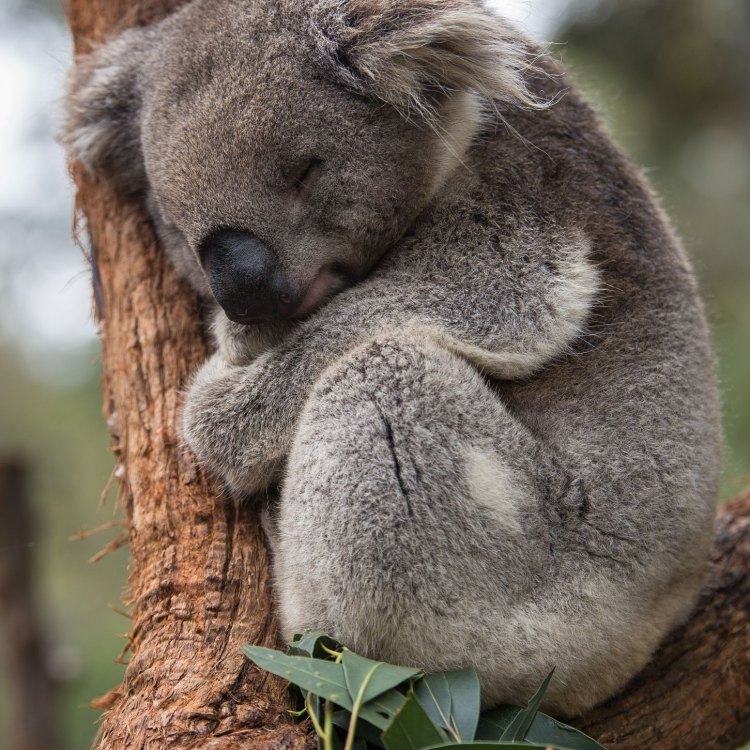
Koala
Animal Details Koala - Scientific Name: Phascolarctos cinereus
- Category: Animals K
- Scientific Name: Phascolarctos cinereus
- Common Name: Koala
- Kingdom: Animalia
- Phylum: Chordata
- Class: Mammalia
- Order: Diprotodontia
- Family: Phascolarctidae
- Habitat: Eucalyptus forests
- Feeding Method: Herbivorous
- Geographical Distribution: Eastern Australia
- Country of Origin: Australia
- Location: Eastern Australia
- Animal Coloration: Gray
- Body Shape: Small, round
- Length: 60-85 cm
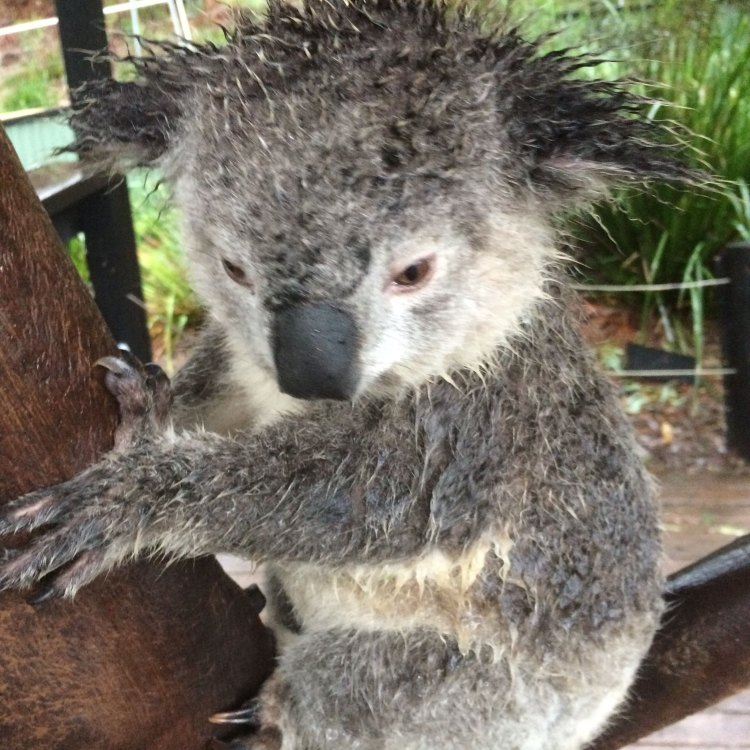
Koala
- Adult Size: 4-15 kg
- Average Lifespan: 10-15 years
- Reproduction: Sexual
- Reproductive Behavior: Polygamous
- Sound or Call: Grunt-like bellow
- Migration Pattern: Non-migratory
- Social Groups: Solitary
- Behavior: Nocturnal
- Threats: Habitat loss, bushfires, climate change, disease
- Conservation Status: Vulnerable
- Impact on Ecosystem: Important for eucalyptus seed dispersal
- Human Use: Tourism, fur trade
- Distinctive Features: Large round ears, black nose, sharp claws, and thick fur
- Interesting Facts: Koalas sleep for up to 20 hours a day and are not bears, they are marsupials
- Predator: Humans, dogs, and cars
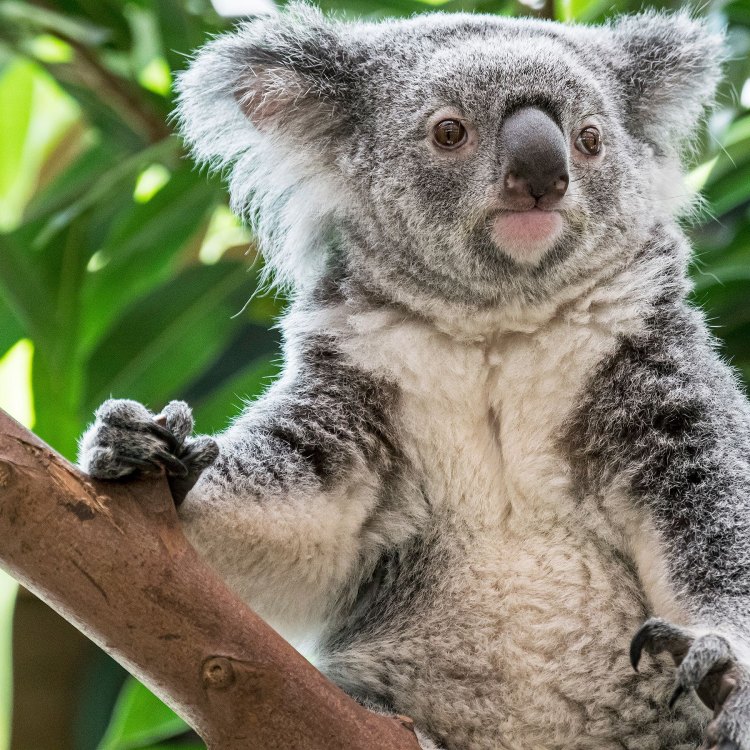
Phascolarctos cinereus
The Unique and Fascinating World of Koalas
When one pictures an iconic animal of Australia, the image of a cuddly koala often comes to mind. These beloved creatures are synonymous with the country's culture and are often featured in movies, TV shows, and tourist attractions. But there is so much more to koalas than their adorable appearance and gentle demeanor. In fact, the world of koalas is filled with unique features, behaviors, and challenges that make them one of the most fascinating and vulnerable species on our planet PeaceOfAnimals.Com.The Physical Characteristics of Koalas
Koalas, also known as koala bears, are not actually bears at all. They are members of the marsupial family, meaning they carry their young in a pouch. They are often called "koalas" for short, but their scientific name is Phascolarctos cinereus, which means "ash-colored pouch bear". They can vary in size, with adult males ranging from 4-15 kg and females averaging at around 8 kg. Despite their small size, they have a surprisingly strong grip due to their sharp claws, which are perfect for climbing.One of the most distinctive features of koalas is their large, round ears. These ears are not only cute but also serve a purpose. They have a keen sense of hearing, which helps them detect predators and find potential mates. Additionally, their black nose stands out against their fluffy gray fur Kelp Greenling. This nose is also essential for their survival as it has a strong sense of smell, which helps them locate their favorite food – eucalyptus leaves. Their thick fur not only keeps them warm in cold weather but also acts as a natural water repellant, which is essential for their survival in the harsh Australian climate.
Fascinating Reproductive Behaviors
Koalas have a reproductive behavior that is quite unique among mammal species – they are polygamous. This means that both male and female koalas mate with multiple partners throughout their lives. Males have a scent gland on their chest, which they use to mark their territory and attract females. When it comes to mating, the dominant male in an area will have the most opportunities to mate. However, females have been known to reject the advances of a dominant male and choose a more suitable partner for themselves.Female koalas have a breeding season from October to February, during which they can give birth to one joey (baby koala) at a time. Gestation period for koalas is just 35 days, after which the joey will crawl into the mother's pouch, where it will continue to develop for the next 6-7 months. After this time, the joey will begin to emerge from the pouch but will continue to nurse and ride on its mother's back for several more months. Female koalas can have up to two joeys per year, but this mostly occurs in higher quality habitats with an abundance of food.
Their Nocturnal Habits and Social Behavior
Koalas are generally solitary animals, meaning they prefer to live and forage on their own. However, they are not entirely anti-social, as females will form close bonds with each other and will sometimes even share a territory. Male koalas, on the other hand, are more territorial and will mark their boundaries to keep other males out. Interestingly, while male koalas are known to be aggressive towards each other, they will often form larger groups for social grooming during the breeding season.One of the most well-known facts about koalas is their nocturnal behavior. Due to their slow metabolism and low-nutrient diet, koalas need a lot of rest to conserve energy. This leads them to sleep for up to 20 hours a day, mostly during the day, and become active at night. This also helps them avoid potential predators, such as humans, dogs, and cars, which are some of the biggest threats to their survival.
The Threats Facing Koalas
Unfortunately, koalas face numerous threats to their survival. Habitat loss is the biggest threat, with over 80% of koala habitat destroyed due to urbanization, agriculture, and wildfires. Their specialized diet also makes them vulnerable to the effects of climate change, as changes in temperature and rainfall can affect the growth and nutrient levels of eucalyptus trees. Additionally, disease outbreaks, such as chlamydia and koala retrovirus, have had devastating impacts on koala populations.As a result of these threats, koalas are currently classified as "vulnerable" on the IUCN Red List of Threatened Species. This means that they are at high risk of extinction in the wild, and their population is declining. It is estimated that there are fewer than 80,000 koalas left in the wild, and this number continues to decrease each year.
The Impact of Koalas on Ecosystems
Koalas may be just one species, but their impact on ecosystems is significant. As mentioned earlier, their specialized diet of eucalyptus leaves makes them an essential part of maintaining the balance of these trees in their habitat. They also play a crucial role in eucalyptus seed dispersal, which helps with the regeneration and diversity of plant species in the forests. Without koalas, there could be serious implications for the health and sustainability of these ecosystems.The Human Connection to Koalas
Humans have a long history with koalas, dating back to indigenous Australian cultures. However, with the increasing popularity of koalas as tourist attractions and the fur trade, these animals have faced exploitation and harm. In recent years, there has been a significant shift towards conservation and protection of koalas and their habitats. In addition to ecotourism, initiatives such as tree planting and habitat restoration projects have been implemented to help protect and preserve these beloved creatures.Koalas have also become symbols for wildlife conservation and have captured the hearts and minds of people all over the world. There are numerous conservation and advocacy groups dedicated to koalas, working tirelessly to raise awareness and funds for their protection and survival.
Conclusion: The Future of Koalas
Koalas may be facing many challenges, but there is still hope for their future. Through continued conservation efforts and recognition of the importance of their role in ecosystems, we can help ensure their survival. Individuals can also make a difference through small actions, such as supporting sustainable tourism and purchasing products from companies that promote ethical and sustainable practices.But ultimately, the responsibility falls on all of us to protect and preserve the unique and fascinating world of koalas. Let us work together to ensure that these iconic and beloved creatures continue to thrive for generations to come. So, the next time you come across a koala, take a moment to appreciate and admire its distinctive features and behaviors, and remember the vital role they play in our ecosystem.
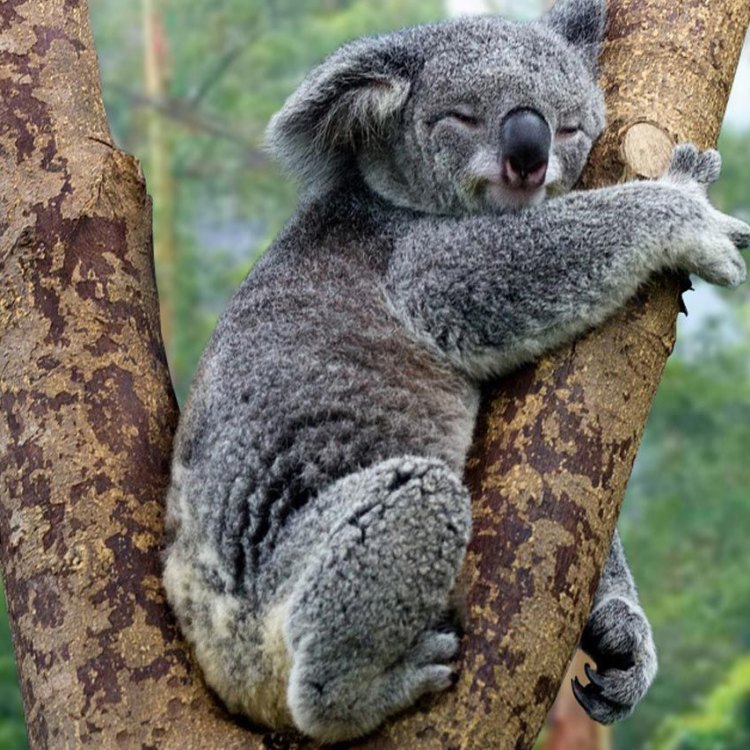
The Adorable, Yet Misunderstood Koala: A Native of Eastern Australia
Disclaimer: The content provided is for informational purposes only. We cannot guarantee the accuracy of the information on this page 100%. All information provided here may change without prior notice.

